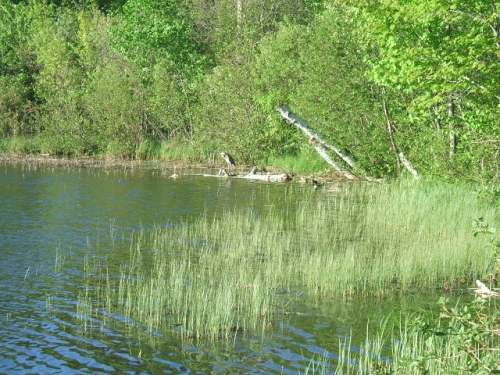Lake augmentation – a solution to low inland lake levels? Part 1
After a dry year, lake residents may be considering augmenting lake levels. If so, there are ecological and regulatory considerations.
 Many lakes are experiencing low levels after the drought of 2012. As a result, lake residents may be considering ways to augment the lake’s water supply for boating and recreational purposes. It is important to remember that lake augmentation projects are regulated by the state of Michigan.
Many lakes are experiencing low levels after the drought of 2012. As a result, lake residents may be considering ways to augment the lake’s water supply for boating and recreational purposes. It is important to remember that lake augmentation projects are regulated by the state of Michigan.
Different types of lakes can react differently to local and regional precipitation patterns. Fluctuating water levels are naturally occurring phenomena in Michigan inland lakes that contribute to the health of the lake ecosystem. These natural cycles help establish diverse shoreline and near shore aquatic plant and animal communities that support fisheries and are adapted to the erosive forces of wind, waves and ice. Augmented lake levels can impair the ability of these communities to provide these “ecosystem services.” Understanding and accepting these ecological principles can help lake residents through the "low" times while avoiding the expense of building, operating and maintaining a lake augmentation project.
What exactly is a “lake augmentation project”? According to a guidance document developed by the Michigan Department of Environmental Quality (DEQ), “A lake augmentation project seeks to supplement the existing water in a lake by pumping water from another surface water source or by extracting groundwater, via a well or a series of wells, and pumping it into the lake for the purpose of increasing its water level or maintaining a water level higher than would typically result under natural circumstances.”
Potential impacts on a lake’s ecosystem from lake augmentation is regulated under Part 301, Inland Lakes and Streams, of the Natural Resources and Environmental Protection Act, 1994 PA 451, as amended (NREPA). Development and construction of the water source for lake augmentation, such as a well or pump, are also regulated as may be other aspects of the project.
In the upcoming Part 2 of this article, Michigan State University Extension will provide guidance and information on the regulated use of water (groundwater and/or surface water) for lake augmentation projects.



 Print
Print Email
Email
